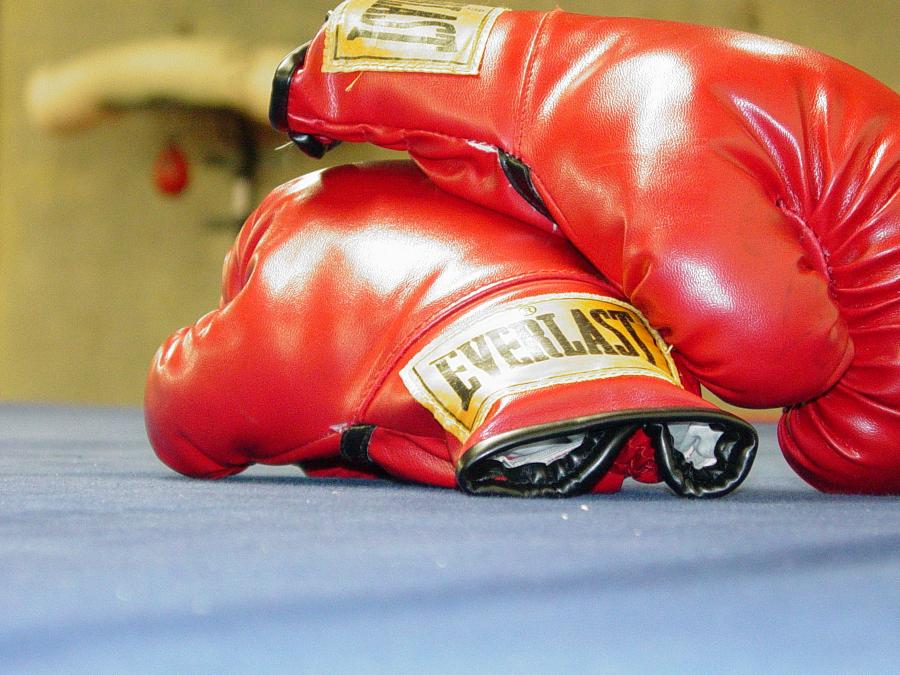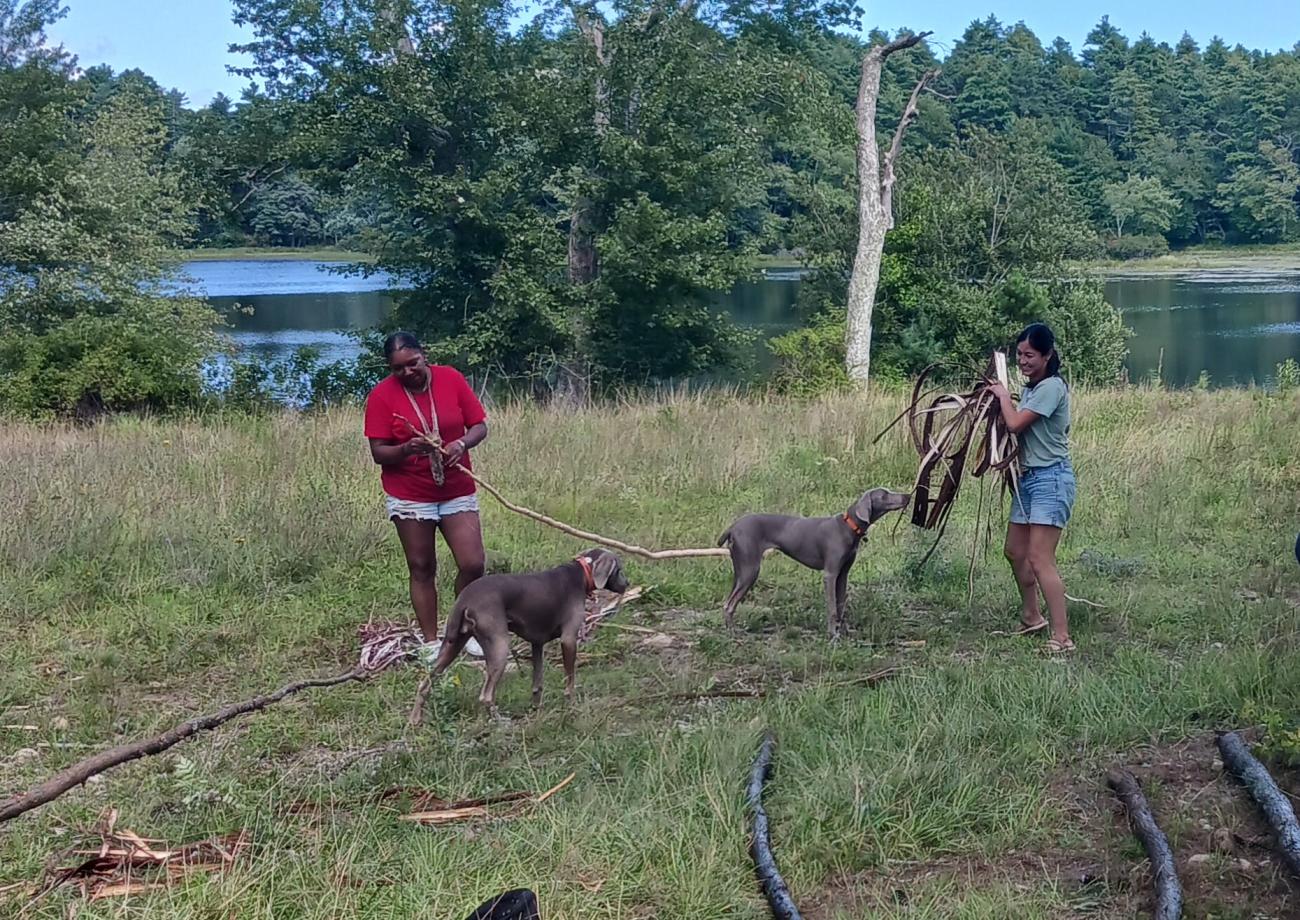
By Hartman Deetz (Mashpee Wampanoag)
I remember growing up in Berkeley, every year when October rolled around we would celebrate Columbus Day—we even had a Columbus elementary school. It was not at all uncommon; it was hard to find a city that didn't have some marker of Christopher Columbus on its streets or institutions. But in 1992, on the 500th anniversary of Columbus landing in Borinquen (Puerto Rico), the “People’s Republic of Berkeley,” as it is sometimes facetiously known, moved to change Columbus Day to Indigenous Peoples Day: the first in the nation to do so. By the year 2000, Columbus Elementary had changed its name to Rosa Parks. Times were changing. Now Indigenous Peoples Day is even printed alongside, or sometimes even instead of, Columbus Day on calendars.
Around the year 2000, I heard one of the first of what would become many land acknowledgments. At the time, I was amazed to hear non-Native people stand up and publicly state the lands of the Tribal people that they were standing upon. It was radical, revolutionary, and refreshing. But, as time moved on and the once-radical Indigenous Peoples Day moved into the corporate calendars, land acknowledgments came to be co-opted by the very institutions that dispossessed Indigenous Peoples from their lands to begin with. As my Wampanoag language teacher, Jessie Little Doe Baird (Mashpee Wampanoag), said, “They are basically saying, ‘yeah, we stole your land, we know it, and we are keeping it. So what?’”
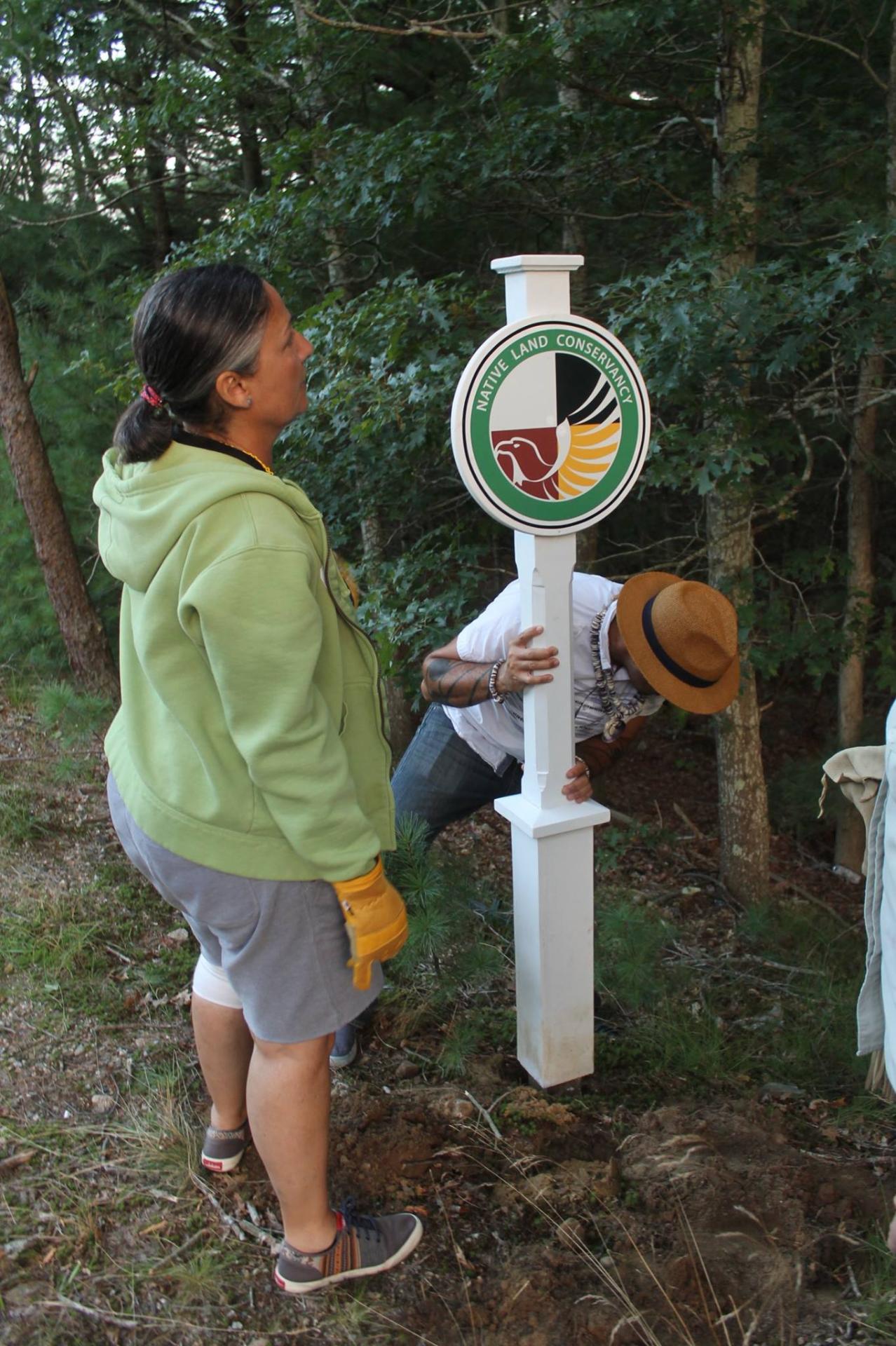
NLC sign. Photo by Hartman Deetz.
Diana Ruiz, Executive Director of Native Land Conservancy in Mashpee, Massachusetts, says, “Land acknowledgments are a great first step to acknowledge that there is a need for healing, but it is just that. Groups need to do the work of self-education about the land they occupy, how they came to occupy it, the people who originally were there, and are they still here.” In many cases, I have found that land acknowledgments tend to take on the feeling of the “vanishing Indian” trope, where Indigenous people are simply the ones who once lived here, where we are permanently cast as leftovers from the stone age instead of recognized as modern people. Ruiz says, “It is not that Indigenous people have not found ways to survive or even thrive under colonialism, but that western perspectives have left out crucial original perspectives on being responsible caretakers of the land. It is the Indigenous knowledge values and perspectives that should be honored that has been stifled in recent times.” She points out that the cultural values are seen in the mission statements of the organizations, and that “The mission of NLC is to protect and restore land wherever possible for all living beings. This work is guided by millennia of direct experience of the all Indigenous Board and their relationship with their ancestral lands.”
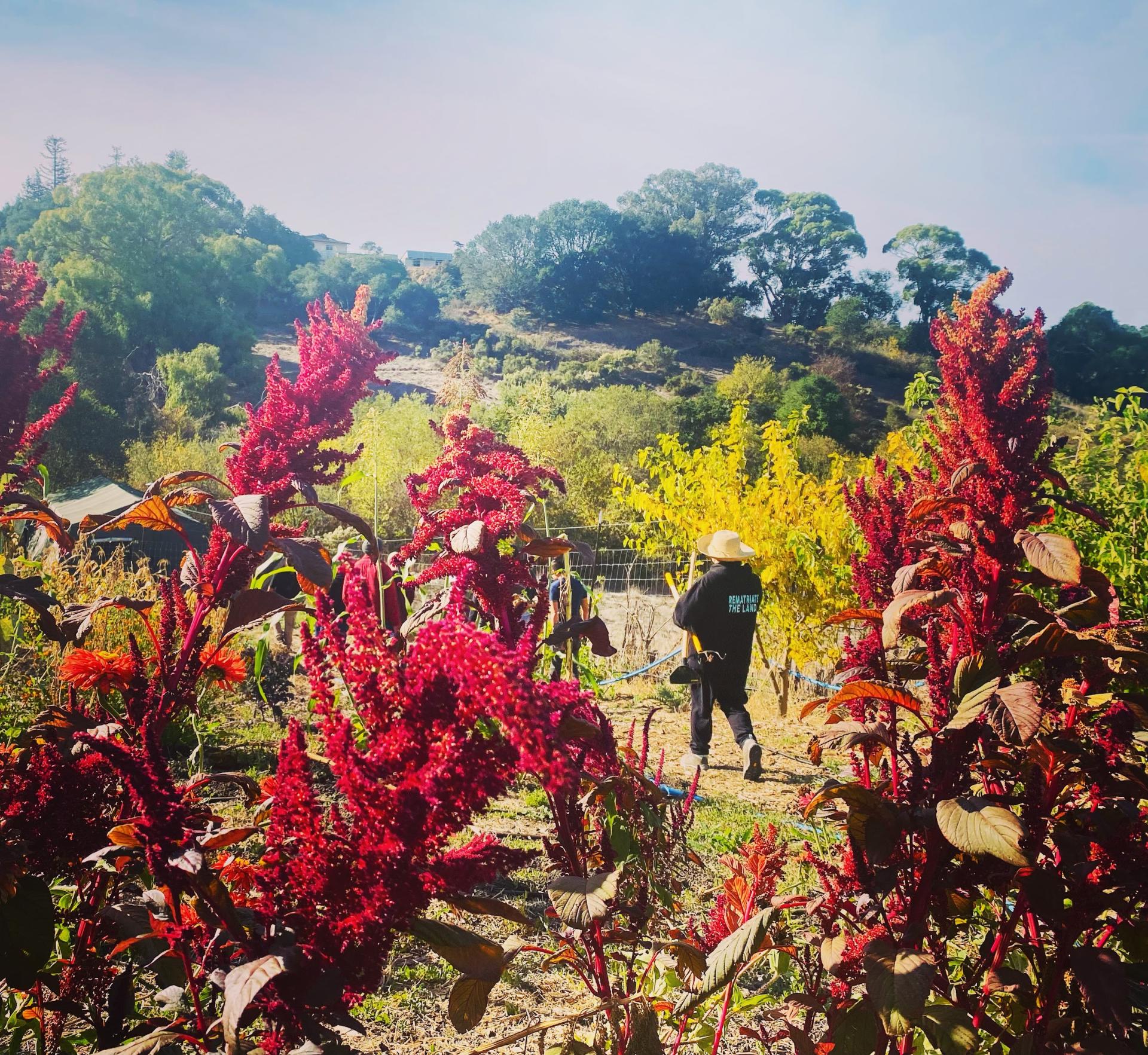
Photo by Inés Ixierda, courtesy of Sogorea Te' Land.
The mission statement of Sogorea Te’ Land Trust, based in the San Francisco Bay Area, is “Through rematriation, cultural revitalization, and restoration to create healing and transformation of relationships of both Native and non-Native people to the legacy of colonization, genocide, and patriarchy.” Sharon Marcos (Q'anjob'al Maya), Office Administrator at Sogorea Te’ Land Trust, says, “Our team is often asked to help in creating land acknowledgments, and this is a great first step to addressing the legacy of colonization. But now we must move past that to ask institutions: what are concrete ways we can actively engage and support Indigenous communities in getting their lands back? Because to just give an acknowledgment is a great first step, but without the followthrough of actions, it becomes performative allyship. Ultimately, to give Indigenous communities land back is fundamental to allowing these communities to heal and reclaim their ancestral knowledge. Our team insists that any land acknowledgment must be a living document; it must only be a part of building relationships with Indigenous communities that require ongoing effort to support Indigenous communities' rights to sovereignty and self-determination.”
Shifting from simply stating the facts of colonial dispossession to actively engaging in repair work is what actual accountability looks like. “Repairing these relationships are dependent on a case-by-case assessment of what is possible. But, in making these decisions, we should turn to Indigenous-led landholding groups, whether it is a Tribal government or environmental or cultural nonprofit. Institutions and land trusts should ask themselves to find out, when possible, how can the title be transferred or can cultural respect agreements be formed. Can Native people be involved in the management and plans for land? There are a whole range of tools, but the work must begin with Indigenous people at the table,” Ruiz says.

Photo by Inés Ixierda, courtesy of Sogorea Te' Land.
If we want to put #LandBack into practice, it will take a range of methods and strategies to see its ambition through. The formation of partnerships like the Chumash Marine Sanctuary is an example of how Tribal and federal governments can redress some of the injustices of the federal parks program. I support Indigenous Tribes and Tribal members who seek to reclaim stolen lands in the courts, or even compensation for land, but I also support money going into buying back land that is important to Indigenous people. Native-operated land conservation organizations are one piece of that puzzle that is easy for the general public to support. Being that these are charitable organizations to which donations are tax deductible, one strategy pioneered by Sogorea Te’ is the idea of the Shuumi Land Tax, while it is not a true tax levied by a government it is an “acknowledgment of the people whose land we stand on” where participants pay a voluntary “tax” that can be written off. Shummi is a Chochenyo word for gift. A shummi land tax can sidestep lawsuits, government inaction, and jurisdictional red tape to help Indigenous people get their land back more quickly.
“It is important for non-Native people to uplift and support Native communities in healing the land and transforming the colonizer's relationship with the Earth and all living beings to understand that we are all interconnected. The Earth not only gives us a home, but holds stories and Traditional Knowledge that allows Native people to hold onto our culture,” says Sharon Marcos (Maya). Marcos grew up in Los Angeles hearing stories of her family being displaced from their ancestral Mayan homelands in Guatemala. She says that working for Sogorea Te’ was an amazing opportunity as a guest on Lisjan Nation land: “Helping to get land back, as an Indigenous person displaced from my own homeland, I understand how #LandBack for Native communities is an opportunity for liberation and healing.”

Photo by Inés Ixierda, courtesy of Sogorea Te' Land.
Where Marcos came to the work through involvement with the community and cultural center Intertribal Friendship House in Oakland, Ruiz came from an academic background in environmental science. She was looking for something in the nonprofit field, and says that after meeting the founder of Native Land Conservancy, Ramona Peters (Mashpee Wampanoag), and the treasurer, Leslie Jonas, she knew this would be a perfect fit, but “never imagined this job to have grown to become both the professional and personal passion that it is now.”
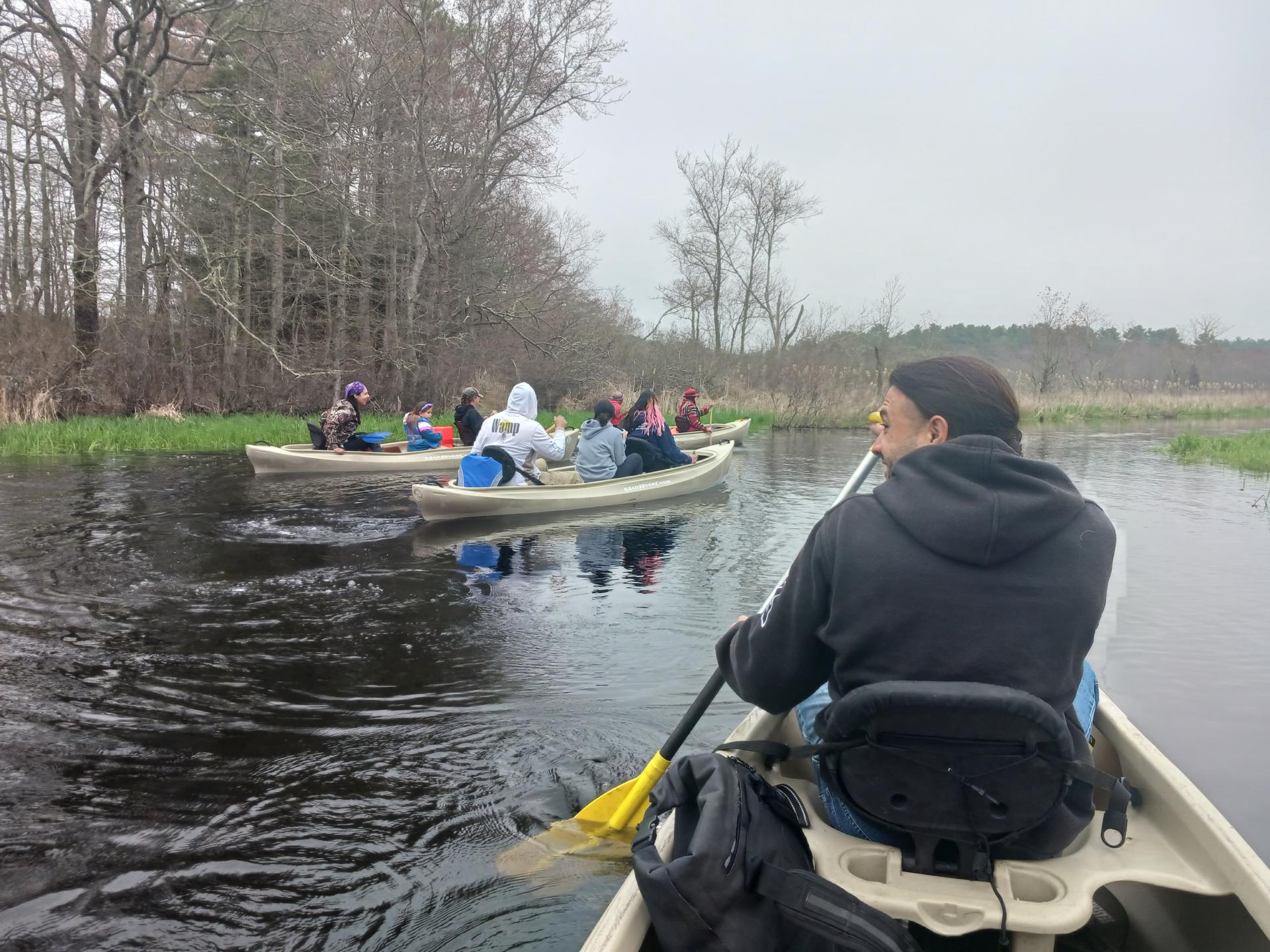
NLC Tribal canoe paddle through Middleborough village site. Photo by Hartman Deetz.
Sogorea Te’ and the Native Land Conservancy are operating in two of the most expensive real estate markets in the country, the San Francisco Bay Area and Cape Cod, Massachusetts. Yet, through people’s desire to help make #LandBack a reality, they have each managed to acquire significant land holdings for Tribal people. The Sogorea Te’ land trust manages seven properties, primarily within the Lisjan Nation, in an area of dense urban development. The focus of the land projects they manage has been on gardening and cultural education programming. Native Land Conservancy shares the focus on space for cultural programming, along with a focus on acquiring undeveloped land for conservation.
Part of what the Native Land Conservancy has pioneered is the implementation of Cultural Respect Agreements, where existing land conservation and trust organizations create special terms of access for Indigenous people that recognize Indigenous Peoples’ pre-existing rights on the lands, whether access for ceremony or sustainable harvesting of natural resources such as medicinal plants or natural materials used to create cultural arts. The organizations’ shared interest in cultural programming shows how Indigenous culture is fundamentally attached to the lands that Indigenous people come from. Marcos says, “Ultimately, restoring human beings’ rightful place in relation to the land is a means for both Native and non-Native [people] to restore relationships with the land and honor the ancestral knowledge that comes from the land itself. For Native people, the land is a teacher who educates us about our language, our food, our medicine...fundamentally who we are.”

Darius Coombs leads Tribal youth in weety8 frame construction on Wampanoag Common Lands. Photo by Hartman Deetz.
Other organizations, such as the Amah Mutsun Land Trust in Southern California, the Indian Land Tenure Foundation in Minnesota, and the Ute Land Trust, which operates as an entity within the Tribal government, are also doing valuable #LandBack work. The need for #LandBack is present wherever there is a history of colonization. Truly, accountability is the next step, the most immediate step toward healing for all involved. For people and institutions that want to contribute to the movement, Marcos advises that “a good place to start is by researching one's own benefits that come from the displacement of Indigenous people. Ask yourself how to engage and offer support. Can you donate or volunteer to support Indigenous-led programs that allow Native people to take care of the land? Can you uplift the stories of Indigenous communities and the work they are doing? [Or], find ways to support teaching the histories of Indigenous communities in the school systems and to the younger generations that allow society to build real relationships based on respect and reciprocity.”
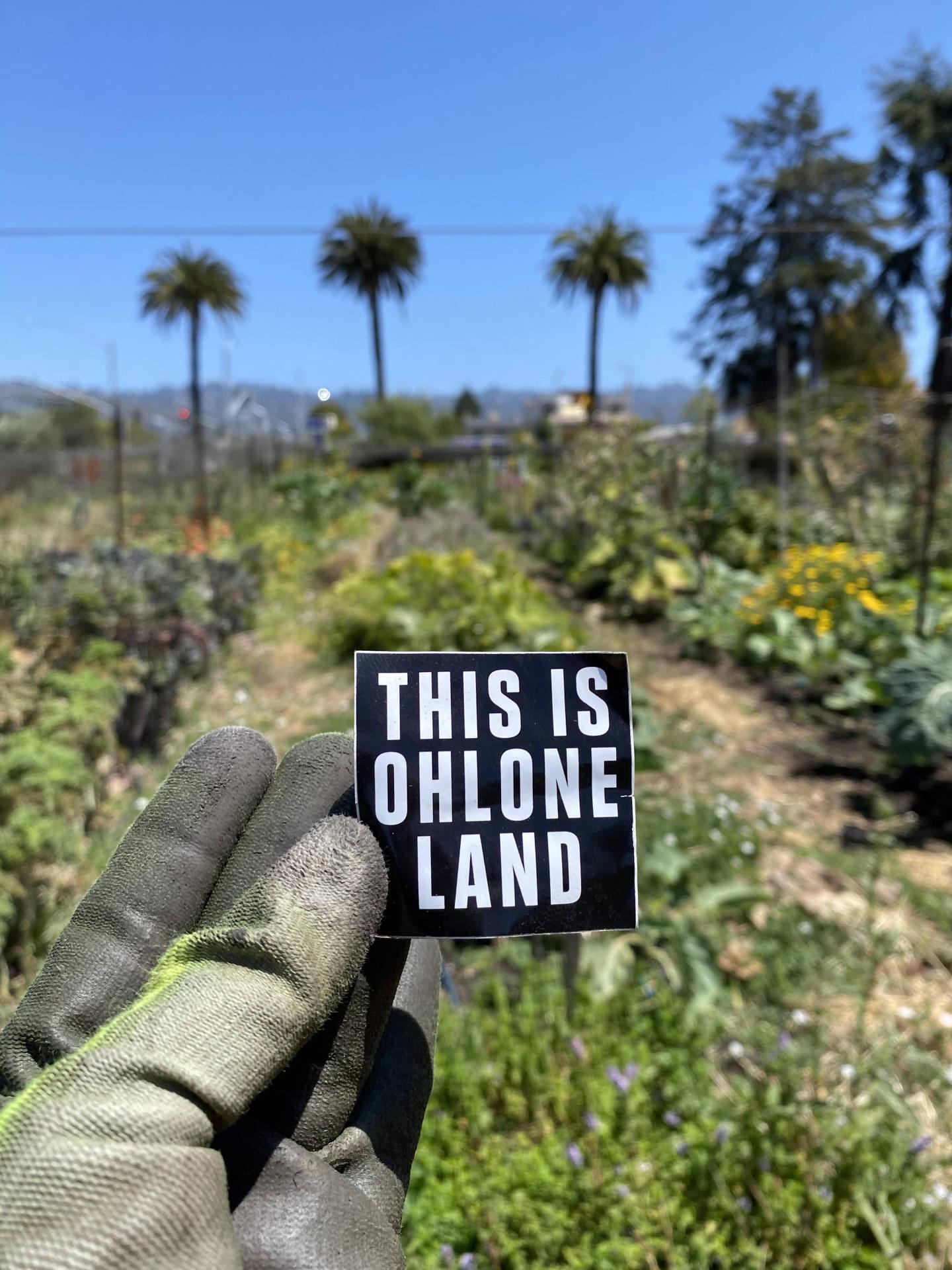
Photo by Inés Ixierda, courtesy of Sogorea Te' Land.
I love to see news of #LandBack on my social media feed, whether here in the United States, in Africa, or in Australia. Land trust organizations approach this work through cooperation, collaboration, and negotiation. This process creates healing relationships and makes for just transitions for all involved. Restoring our balance and affirming our commitment to justice is how we decolonize and re-humanize. In the end, #LandBack is another step in the long journey toward decolonizing and repairing our relationships with the land and each other.
--Hartman Deetz (Mashpee Wampanoag) has been active in environmental and cultural stewardship for over 20 years. He is a traditional artist as well as a singer and dancer, having shown his art in galleries and performed for audiences from coast to coast across the U.S. He is currently a 2023-2024 Cultural Survival Writer in Residence.
Top: Toodie Coombs and Diana Ruiz prep cedar poles at Wampanoag Common Lands. Photo by Hartman Deetz.

